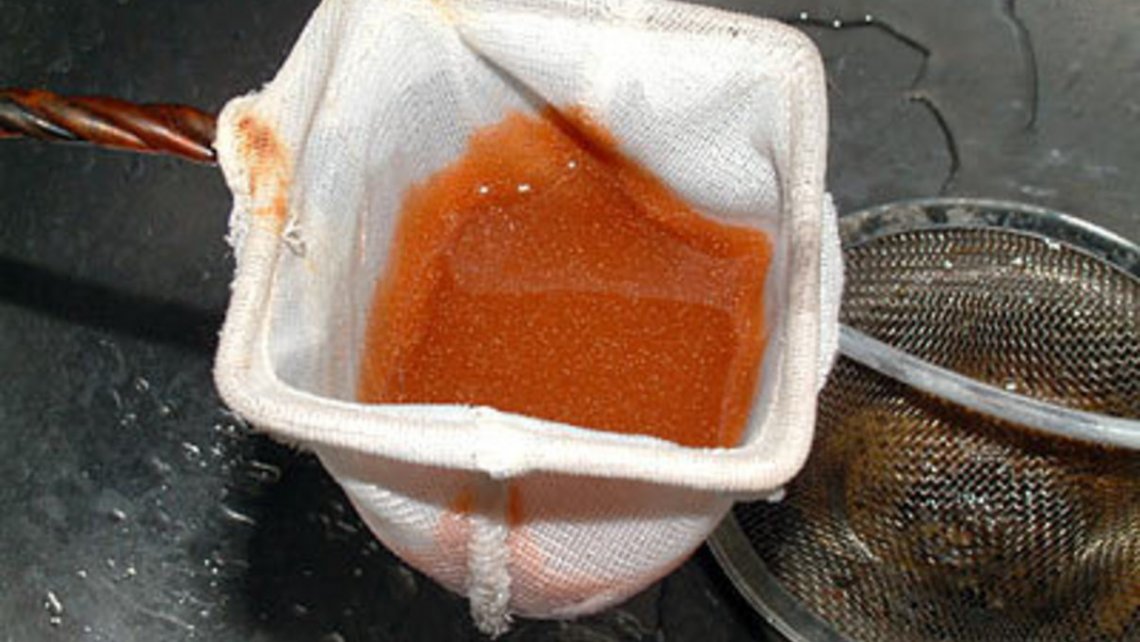Hatch and Harvest Baby Brine Shrimp
Growing baby brine shrimp allows me to feed the smaller fish in a reef tank containing large voracious tangs. Every day, one batch is added to the tank while the pumps are off. The tangs swim through the tiny bits of live food, while the little fish have their meal.
Hatching brine is easy, and doesn't cost much. The recipe is available on my site. Two hatching stations allow me to always have a new batch available daily.
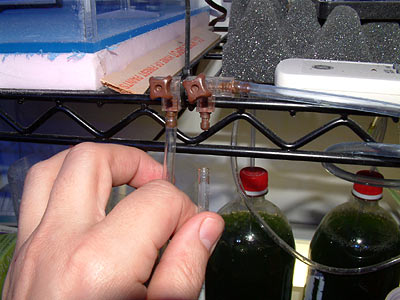
To use today's batch, first I disconnect the airline tubing that leads to the hatchery that has been bubbling for 48 hours. These valves are set to gently bubble, keeping the water and eggs tumbling.
As I carry the hatchery, I keep the loose end of the tubing I disconnected higher than the hatchery to avoid spilling any water, since the other end is connected at the base.

Very gingerly, I place the hatchery on the window sill over my sink. I do not want to disturb the floating shells on the top, nor any that may be sticking to the walls of the hatchery. These are not to be added to the tank.
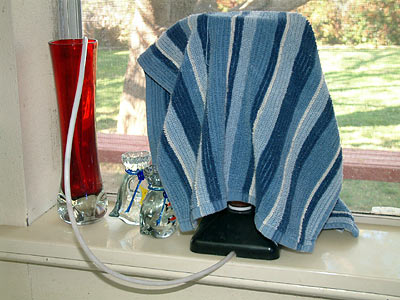
I cover the hatchery for about 20 minutes, because a lack of light helps get the hatched brine to settle. They are attracted to light.
Note, the tubing is inserted in that red vase, merely to avoid any water siphoning out. I used to hang the tubing over a nearby hook, but the vase was handy and never has accidentally let go of the tubing.
You may wonder why I use such a tall bottle for less than 3 cups of fluid. The added height avoids any spatter in the hatching area as the bubbles pop over the 48 hours. This works well.
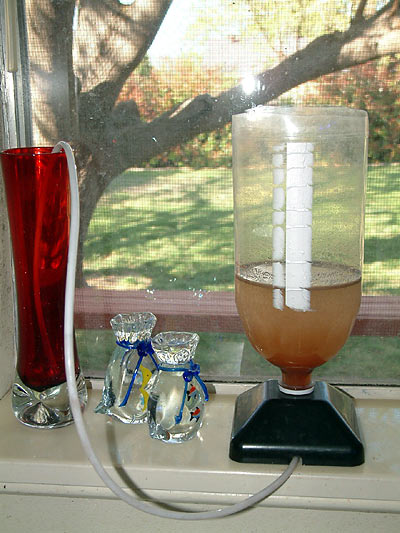
The brine is starting to settle into the neck of the bottle.
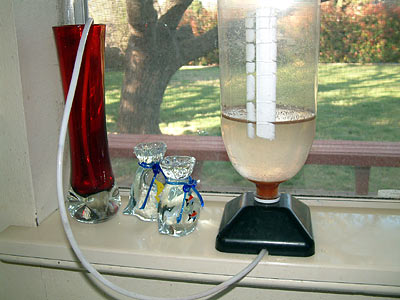
Now that all the eggs have settled....
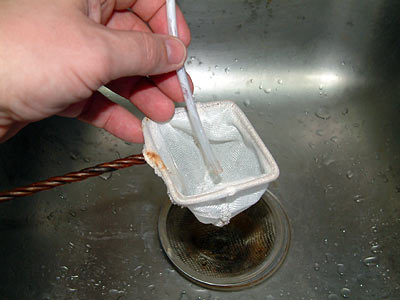
I place the end of the tubing into a brine shrimp net over the sink.
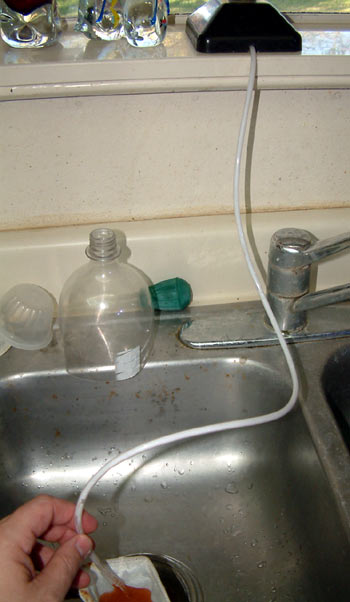
Gravity drains the hatched brine shrimp into the net. I watch the contents of the hatchery closely to avoid draining egg casings into the live food.
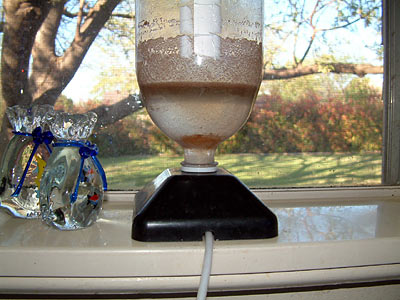
Almost all of the live brine is gone. Just a hint of the orange brine still stick to the area of the neck of the bottle.
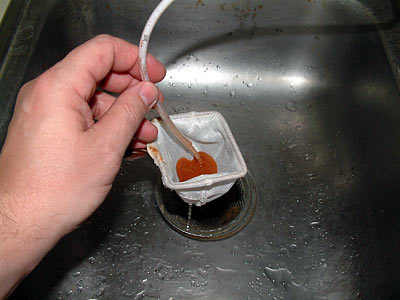
The net drips out the polluted water.
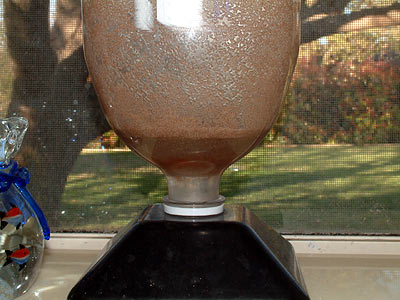
The egg casings have stuck to the bottle as the water drained out.
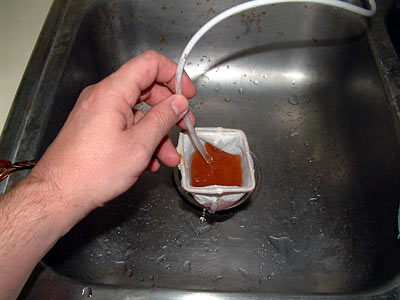
Time to stop. If I continue, all of the waste (egg casings) will pour down the tubing, and clog the nozzle in the hatchery.
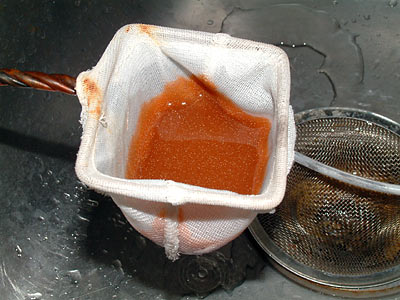
The net is set to the side of the sink to drain completely of any fluids.
I use this time to clean out the hatchery for the next batch.
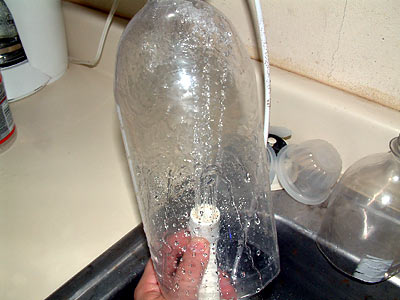
Inverting the hatchery, I use the spray nozzle to rinse out the egg casings. Then it is wiped out under water with my hand. Occasionally I'll rinse the bottle with bleach & water, or just get a new two liter bottle.
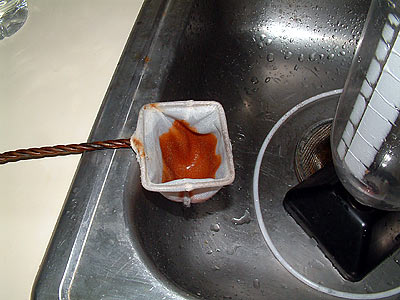
The hatched brine shrimp is ready to add to the tank.
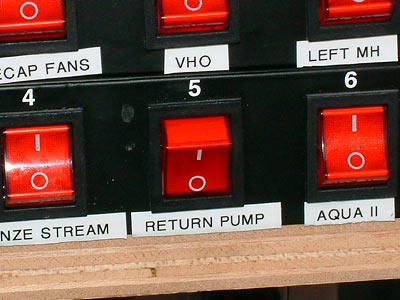
Turn off your return pump, to keep the live food in the display. I see no reason to feed aptasia down in the overflows and sump.

Once the tank stops draining water to the sump, the net is lowered into the tank and the food released. The Tunzes do a great job of dispersion throughout the display.
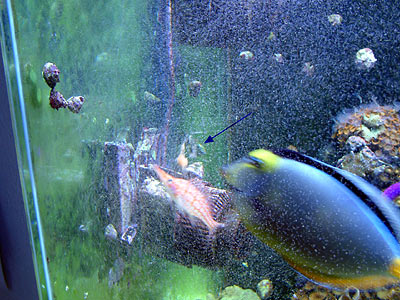
The fish love to bite right into the food ball. You can see a little bit of one where the arrow points above. By the time my camera had focused on it, most of it had dispersed.
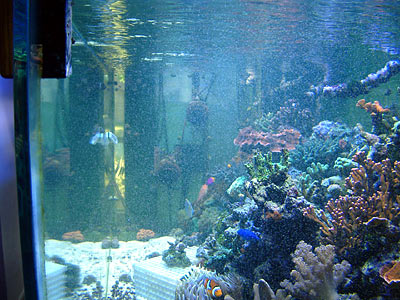
The tank, within 1 minute of adding the food.
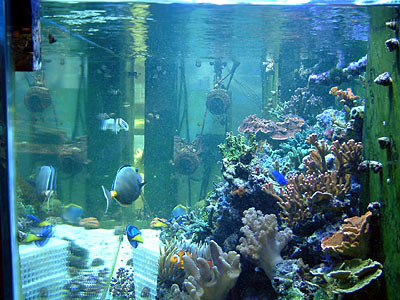
10 minutes later.
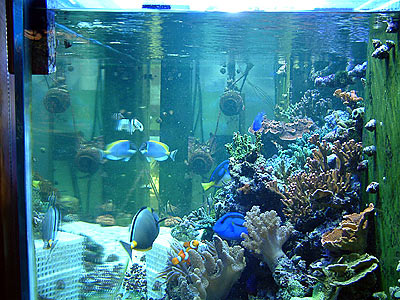
20 minutes later.
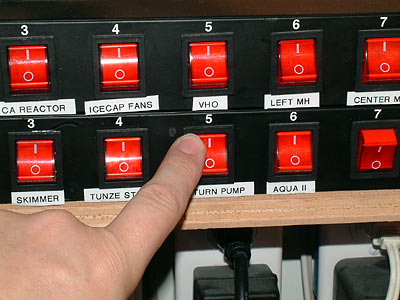
Restart the return pump.
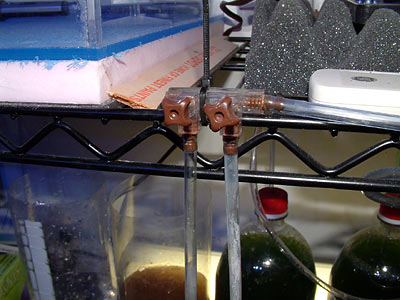
Time to make the next batch. Reconnect the airline tubing.
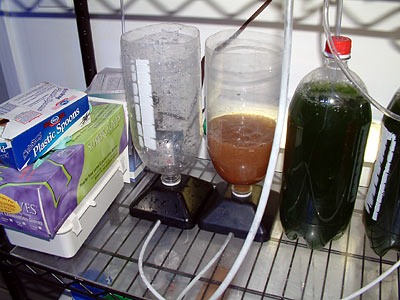
Position the empty hatchery. I always put the newest batch on the left, to avoid confusion. The batch for tomorrow is on the right.
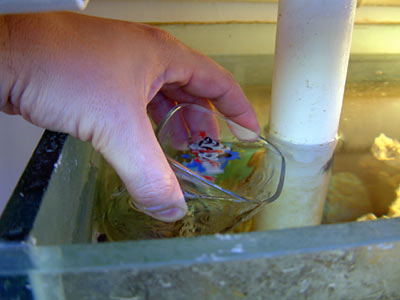
Get 2 cups of tank water. This glass holds two cups, btw.
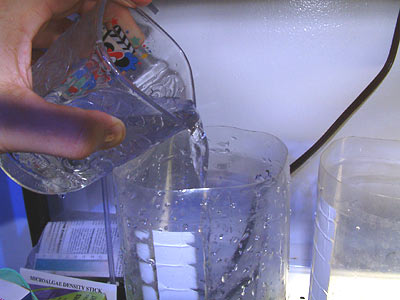
Add it to the hatchery.
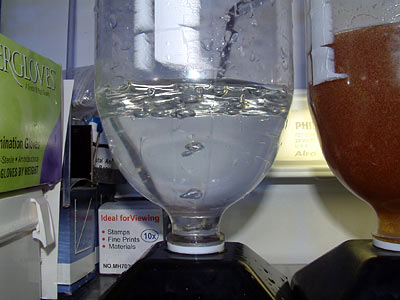
Bubbles rising in the tank water.
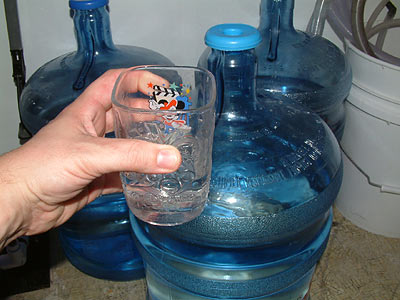
Get a 1/2 cup of RO water.
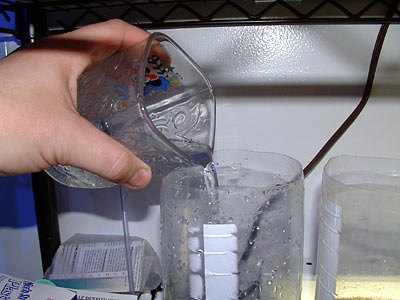
Add the 1/2 cup of RO water to the saltwater.
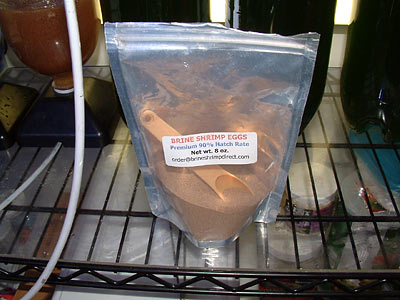
I use Brine Shrimp Eggs from BrineShrimpDirect. This bag is 90% hatch rate, what they refer to as Premium Hatch Rate.
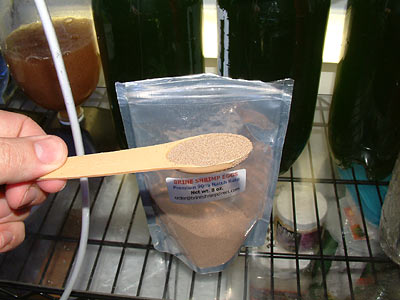
I use one level teaspoon of eggs per batch.
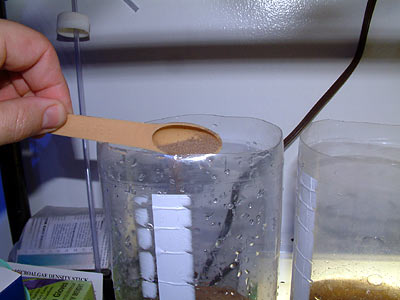
Add that to the hatchery. Brine shrimp don't need light to hatch, but the water should be 81 to 82F, so I placed these hatcheries near the same light I use to grow phytoplankton. The temperature remains stable in the fish room. The light is on 16 hrs per day.
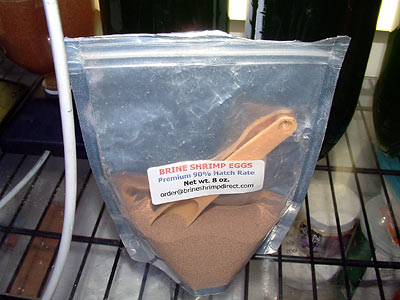
I keep the measuring spoon in the container, and seal it well to avoid letting humidity spoil the product.
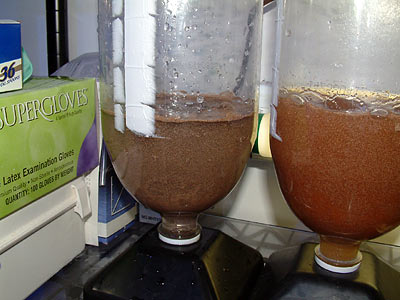
This batch (on the left) will be ready for harvesting in 48 hours. You may not need to hatch as much as I do. Use a 1/2 tsp or less to culture your preferred amount.
